Oliver’s 18th birthday is still 7 months away, but he’s decided that he needs to start planning his birthday party now. As part of this effort he’s developing a guest list for the party that includes everyone who’s every been to one of his birthday parties (his self-selected theme for the party being “goodbye childhood, hello adulthood”). This is turning out to be tricky, as my documentation on the blog of his birthdays ranges from the detailed to the vague (will we ever learn the true identify of “little girl”?).
For this reason I decided it was important to take a photo of my breakfast, the “veggie toast” and a cortado from Receiver Coffee.
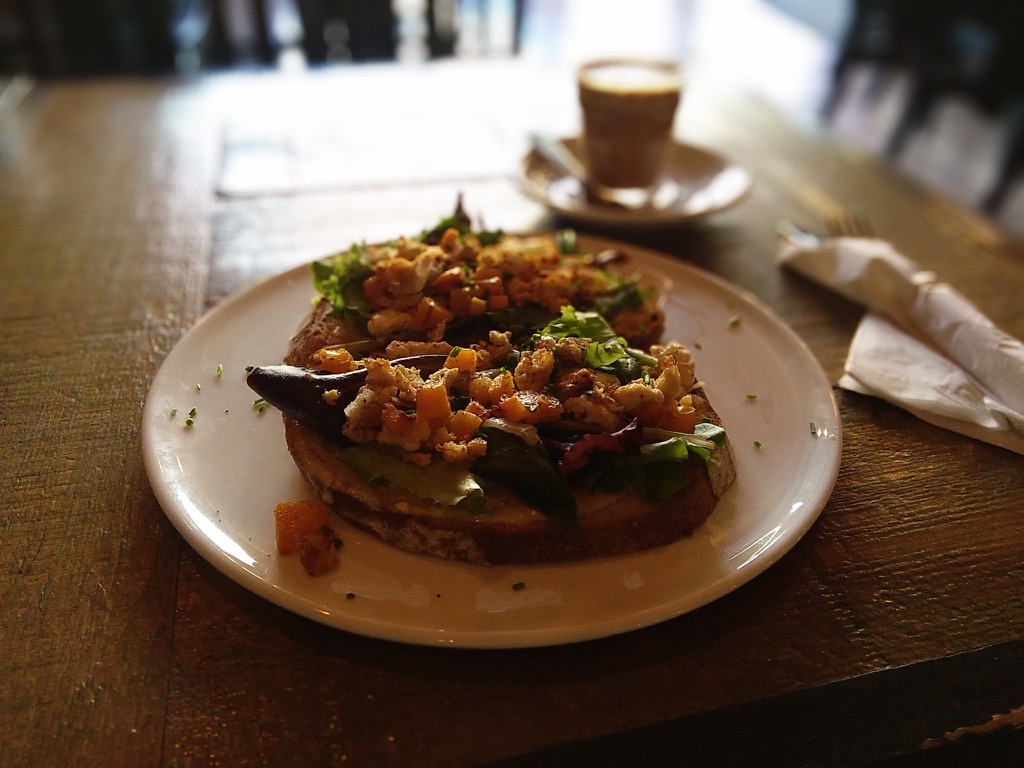
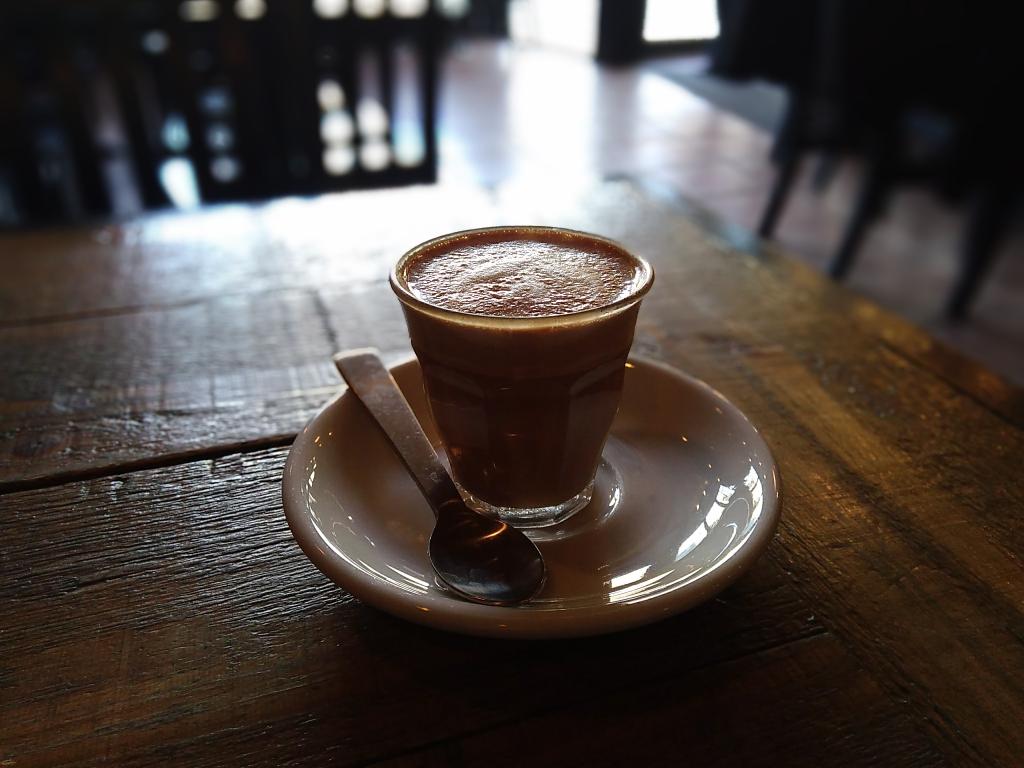
Back in 2011 I wrote about how the Marimekko Cash & Carry bag, I’d found the perfect bag for carrying around all my stuff.
In the intervening years this sort of bag has come to be known, by both preppers and hipsters, as an “EDC” bag—for every day carry. It’s a linguistic trick to avoid “purse” that I don’t think we really needed, but that’s where the SEO is now.
The Marimekko bag has served me well for almost 7 years, but has started to fall apart of late; most noticably there is an ever-widening rip in the top corner, and the top and interior zippers have started to go bad. I wrote to Marimekko about getting it fixed, but they demurred, and so I went looking for a replacement.
I ended up finding the Bolstr EDC on Kickstarter, where it’s described like this:
A few extra pockets - bolstr is the perfect crossbody bag for guys and their smartphones, keys, wallets, sunglasses, but not much more.
A lot of what you end up looking at on the end of an “EDC” Google search is from the prepper end of the spectrum: bags designed to carry keys, wallet, phone, hunting knife, ammo, dried food, matches and binoculars.
The Bolstr bag was a more modest offering, and allowed me to support a product that’s not serving the post-apocalyptic market.
And so I ordered one, and it arrived today.
First impressions are good, and the bag will be over my shoulder tomorrow for the first time.
Full review to follow when it’s got some miles on it.

Vernacular Economics: How Building Codes & Taxes Shape Regional Architecture is an interesting treatise, from 99% Invisible, on how tax policy can shape the built environment.
Reading the article brought to mind a visit I made in the late 1980s to the decaying shell of the once-grand Capitol Theatre in the heart of Port Hope, Ontario.
I was very interested in movie theatres at the time, thinking, if memory serves, that I might open one of my own at some point. This interest led me to travel down the road to Port Hope from Peterborough, where I was living at the time, to meet with Rod Stewart, a builder who’d acquired the Capitol and had plans to breathe new life into the theatre.
Rod took me through the entire building, shadows of its former self hidden, but not entirely so.
One of the things I remember him telling me was the reason for the theatre’s diminutive street frontage, a feature you can see very clearly in this contemporary street view photo:
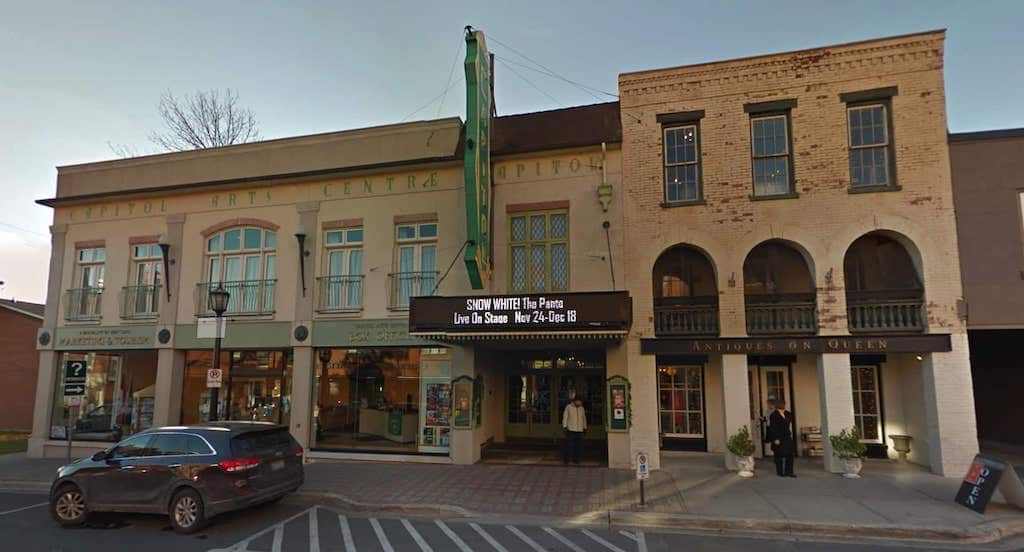
The original theatre entrance is as wide as the marquee, perhaps 3 metres across.
The reason for this, the Rod explained, was that taxation was based on street frontage, and if you were building a large facility like a theatre, you could game the system and build an entrance with limited frontage leading to a large theatre in a back lot. Wikipedia confirms this:
Common in theatre design at the time of the construction of the Capitol Theatre was the layout of a small entrance frontage and a long narrow lobby with the auditorium opening out behind street-front stores. This was because taxes were based on street frontage, land for the larger auditorium was cheaper on back lots and a long narrow lobby connecting the entrance to the auditorium worked well for ticket line-ups. as a theatre built exclusively for talking pictures, it had a small stage, low rake to the floor, no back-stage facilities, a minimal number of washrooms and limited lobby space.
The restoration of the Capitol was subsequently taken over by a foundation, and it reopened in 1995 and has been running ever since as a venue for film, performance and live theatre.
Rebecca Mead wrote a profile of publisher Gerhard Steidl for The New Yorker in May, and it’s a compelling read, especially if you’re interested in any or all of printing, publishing, and eccentricity.
Here is my favourite passage from the profile, a description of Steidl’s neighbourhood:
Steidl lives around the corner from his factory. He prefers to sleep in his own bed, and he often arrives in New York City on the first flight in the morning, and leaves on the last flight the same day. To prepare for the opening of Chanel’s cruise collection last spring, which took place in Havana, Steidl flew from Germany to Cuba for the day, four Fridays in a row. On another occasion, after being honored at an early-evening award ceremony in London, he got on a plane to New York, arriving in time for another early-evening engagement—a screening of a documentary, “How to Make a Book with Steidl,” at the Museum of Modern Art. His artists like to say that he moves faster than jet lag.
The proximity of his workplace and his home is convenient, but there is a serious political motivation underlying it, too. When Steidl was a teenager, he spent several weeks volunteering at Auschwitz, clearing paths for visitors and sleeping in a former barracks. His father had served in the German Army, and Steidl participated in a program that had been established, he said, to show young Germans “what the parents had done.” The experience helped him confront “the dark side of Germany.” One thing that he contemplated was the ethics of separating one’s work from one’s domestic life. “I read about how the homes of the officers were outside the concentration camp, where they had a wife and children, and a little dog, and they were the nicest people you can expect,” he told me. “And then they were going to work—they were shooting and murdering and sending people to death. So I also thought that it makes a huge difference when you are not isolated from your work, when working and living is a symbiosis. Normally, when you have a business and you produce something industrial, you have the plant somewhere and it makes a lot of dirt, and poison, and noise, and destroys the environment. You are working there all day, and then in the evening you drive home and you have your pleasant place to stay, with clean air, while poor people have to live with the dirt you are producing. I control my noise, because I am sleeping there, with an open window, every night.”
I appreciate Steidl’s integration of life and word, and his commitment to living where he works so that he’s forced to confront the byproducts of his work every day.
The venerable space at 35 Prince Street, at the corner of Prince and King, has played home to a variety of restaurants over the years, and Eat & Enjoy is the latest and, arguably, the most intriguing.
Eat & Enjoy’s specialty is the hot pot, a Chinese soup prepared at the table by diners themselves; they opened on Tuesday night, and we decided to brave the cold and have our first meal there, expecting that it would be empty, as the word wouldn’t have gotten out yet.
We were wrong: the place was packed, and we were squeezed into the end of a table at the last three non-reserved seats in the house.

This was our first hot pot experience, and we had absolutely no idea what to do or how to do it; fortunately we had a server who recognized our ignorance and walked us through step by step. My interpretations of his guidance is as follows:
- Pick a soup stock: spicy, non-spicy, or half & half. Within the “spicy” category there were several grades of spiciness, starting with “regular spicy” and getting hotter from there. We opted for a “half & half” of non-spicy and regular spicy.
- Pick a sauce. There are three varieties of oil that come in a small bowl to which you can add ingredients from a central side-table. Because there were three of us, we chose one of each bowl.
- Pick ingredients to cook in the hot pot. These come raw, and you add them to the boiling soup stock to cook them. You can order a “combo” which comes with a set list of ingredients, or you can order them à la carte. There are a variety of meats, seafoods, tofus, vegetables, noodles and mushrooms available.
At this point the ordering is done, and you wait to be served.
Service starts with the delivery of the soup stock in a large pot that’s placed on an induction hot plate in the middle of your table; the temperature is turned up high, and the stock quickly erupts into a roiling boil. Because we ordered “half & half,” our pot was subdivided into two separate sections, with non-spicy on one side and regular spicy on the other:
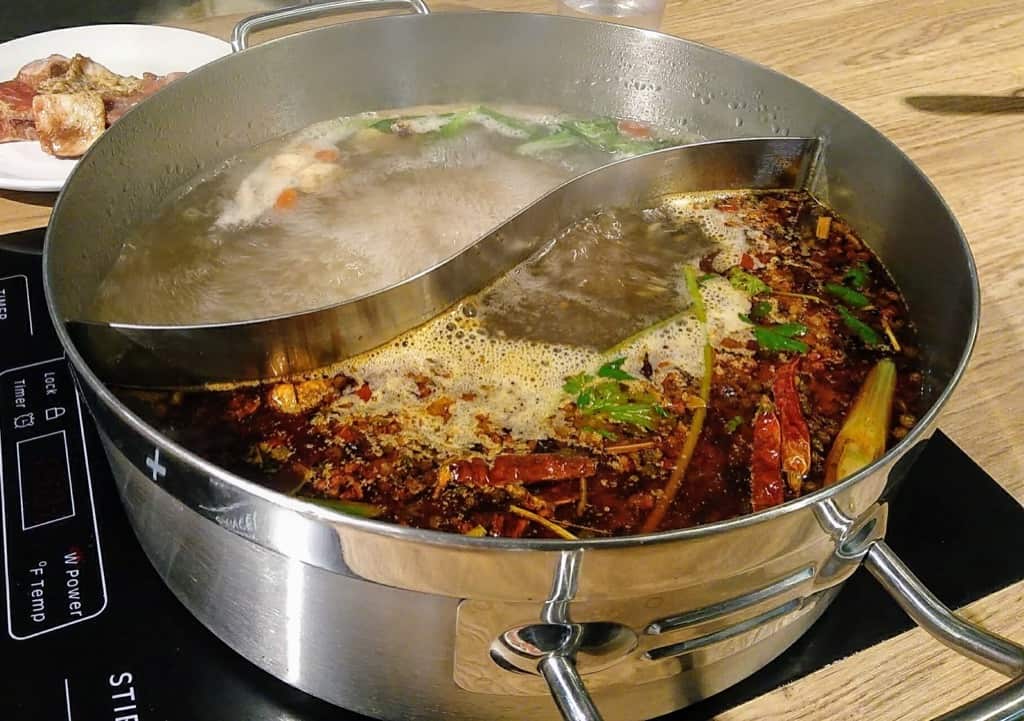
Next you’ll be served one small bowl per person with an amount of oil at the bottom; you may be warned that this is all the oil you’re going to get, but that’s okay. Take your bowl over to the serving table near the kitchen entrance, and spice it up with a variety of fresh spices, salts and other things, to your taste.
Shortly after you return you’ll start to get your ingredients delivered to your table on small side plates:

We were advised to place the ingredients in the boiling soup stock until they were cooked. And because we’d be handling the raw ingredients with the same chop sticks we’d be eating with, to sterilize the chopsticks in the boiling water before eating.
You’ll note that there are two ladles at each table; we found these very helpful for fishing the cooked ingredients out of the soup stock when they were cooked.
When each ingredient is cooked–and they cook at different rates depending on the ingredient–fish them out and into your boil of spiced oil, and then eat and enjoy.
Repeat as often as needed to consume your ingredients.
It seems the role of the pot of soup stock is most as a cooking medium rather than a “pot of soup” that you might be expected to consume all of; and the chili peppers, peppercorns and other spicy goodness in the regular spicy soup stock would be hard to consume in any case.
The “regular spicy” was spicy enough that when I ordered it the chef came out of the kitchen to ensure that I really meant to order it; I assured him that I did (with some quiet trepidation). It turned out to be about the hottest thing I’ve ever consumed in my life, but, that said, it was very, very good, and was more “enveloping deep-down body hot” than “strip paint hot.”
We were in, boiled, cooked, eaten and home within about an hour, but we could have lingered longer if they hadn’t needed the table back.
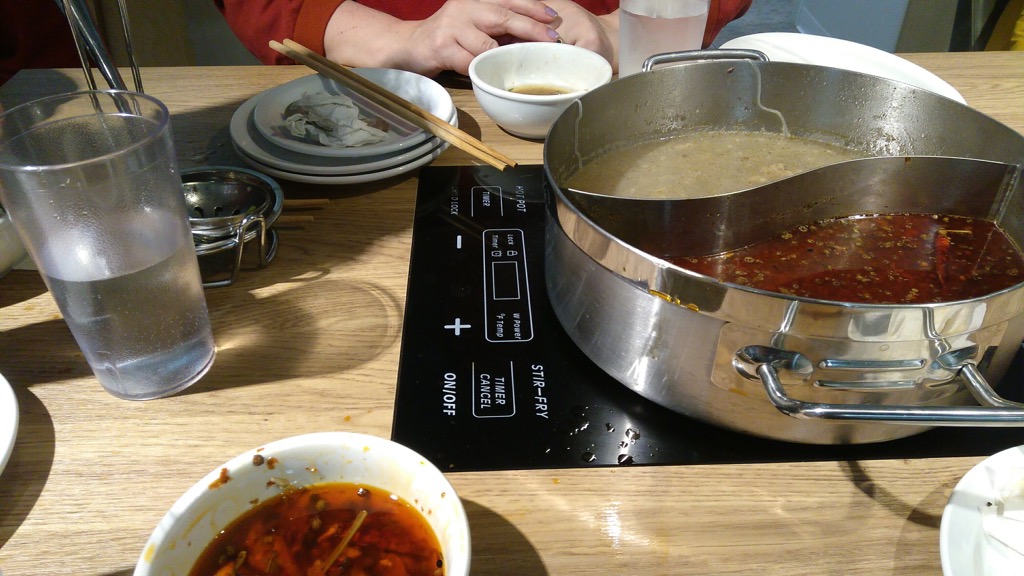
Eat & Enjoy might not be for everyone, but it’s something, I think, that every Islander should experience, as it’s as close to a total, albeit temporary, immersion in more traditional Chinese cookery and culture as you’re likely to find on the Island.
Our bill for 3 people was $40.73 plus tip.

Steve Martin’s blurb on the back of Tom Hanks’s new book, Uncommon Type: Some Stories, reads:
It turns out that Tom Hanks is also a wise and hilarious writer with an endlessly surprising mind. Damn it.
And I agree: I’m only midway through the book, but I’ve found it witty, irreverent, and wide-ranging. Like Tom Hanks.
Here’s my favourite passage so far, from the opening story, Three Exhausting Weeks:
Being Anna’s boyfriend was like training to be a Navy SEAL while working full-time in an Amazon fulfillment center in the Oklahoma Panhandle in tornado season. Something was going on every moment of every day. My 2:30 naps were a thing of the past.
Recommended.
My first job as a coder, when I was 14 years old, was for Skycraft Hobbies, a small hobby shop that used a Radio Shack TRS-80 Model III to manage its inventory using a Radio Shack program called Inventory Control System; through a connection of my father’s I was hired to modify the BASIC code for the system to allow the shop to do things like customizing its receipts.
My second job as a coder was for G.W. Line Canadian Tire in Burlington; I’d started off selling Commodore VIC 20s on the sales floor during the Christmas season, and the next summer I was hired to work out of the Comptroller’s office upstairs to create spreadsheets using Lotus 1-2-3, which was only a year old at the time.
Lotus was the first bona fide PC application I’d ever used, and I thought it was magical, especially when I learned how to use macros to manipulate the spreadsheets programmatically.
My work focused on enabling the Comptroller to analyze things like store sales, wages, and garage mechanic productivity. I was the perfect candidate for the job: I was inexpensive, curious and eager to learn, knew my way around the keyboard, and was, at the same time, mostly blind to the data that was sifting through my fingers.
This morning I was poking through my collection of backup CDs, and I came across one labelled “Important Data Files,” and on the CD was a file named CANTIRE.ZIP.
I copied the file onto my Mac, unzipped it, and, fresh as the day I created them more than 30 years ago, were all those Lotus 1-2-3 spreadsheets. Apparently at some point in the past I presciently copied the backup floppies onto a backup CD.
As a credit to the longevity of the Lotus WK1 file format (and to the power of open source software), I was able to load the spreadsheets into LibreOffice without any problem. Here’s a screen capture of what some of the macros look like:

There’s a bunch more interesting-looking stuff on the “Important Data Files” CD, including Turbo Pascal code that I wrote to manage accreditation for the Canadian Association for Pastoral Education, and Catherine’s correspondence related to her work on the Ontario Training and Adjustment Board in the early 1990s.
Backup disks are fun.
On January 11, 2018 I ordered two books of “From Far and Wide” stamps from Canada Post using its online store.
As detailed here, Canada Post’s delivery standard for online orders, which should serve as a “we’ll get you your stamps within 24 hours” showcase for their logistics fu, is abysmal.
And so it took 12 days for the stamps to arrive.
From the time I ordered the stamps on January 11 it was 7 days until they shipped from Ottawa on January 18. From there the package hung around Ottawa for another day, then took 3 days to get to Dieppe, NB and another day to get across the bridge to me.
![]()
Here’s the envelope that Catherine signed for yesterday:
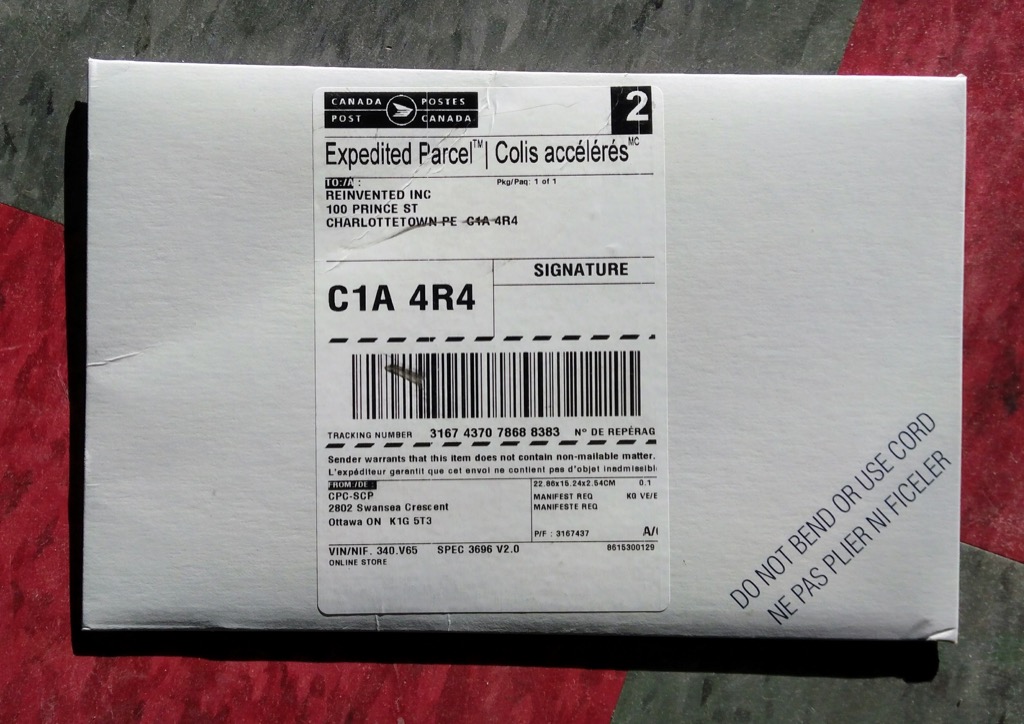
And here’s what was inside:

According to Google Maps, it takes about 9 days to walk from the Canada Post’s distribution centre at 2802 Swansea Crescent in Ottawa to our house, which includes a ferry up the St. Lawrence to the Magdalen Islands and then another ferry from there to Souris.
Canada Post: Just Slightly Slower than Walking!
A year ago brother [[Johnny]] gave me a gift of a 2017 calendar of historic maps of the world; when the year came to an end it seemed like a shame to have the map plates go to waste, so I trimmed them out of the calendar and then went looking for a project.
When I came across the quote “A Map is the Greatest of All Epic Poems,” attributed to Gilbert Grosvenor, founding editor of National Geographic magazine, I knew I had it.
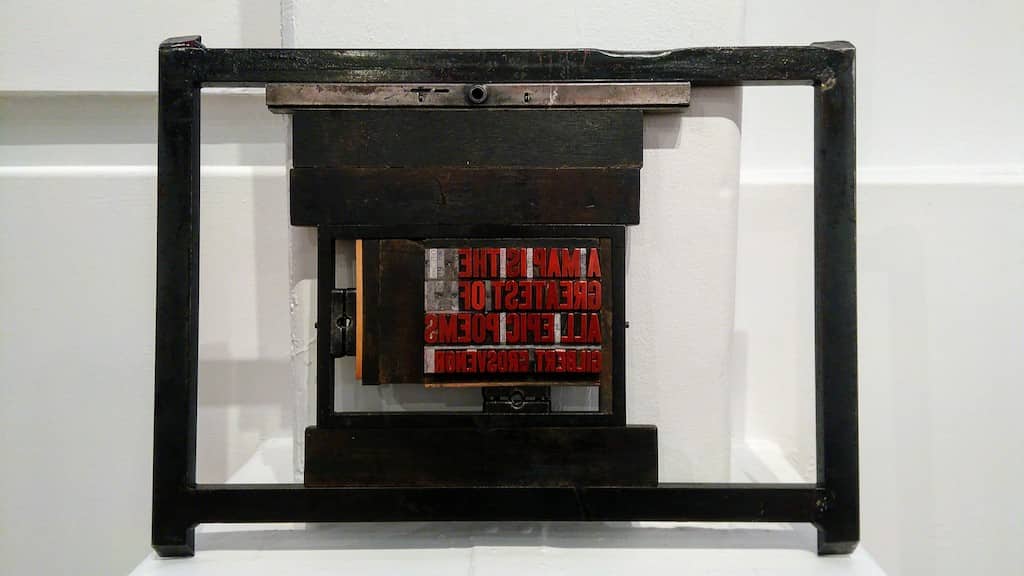
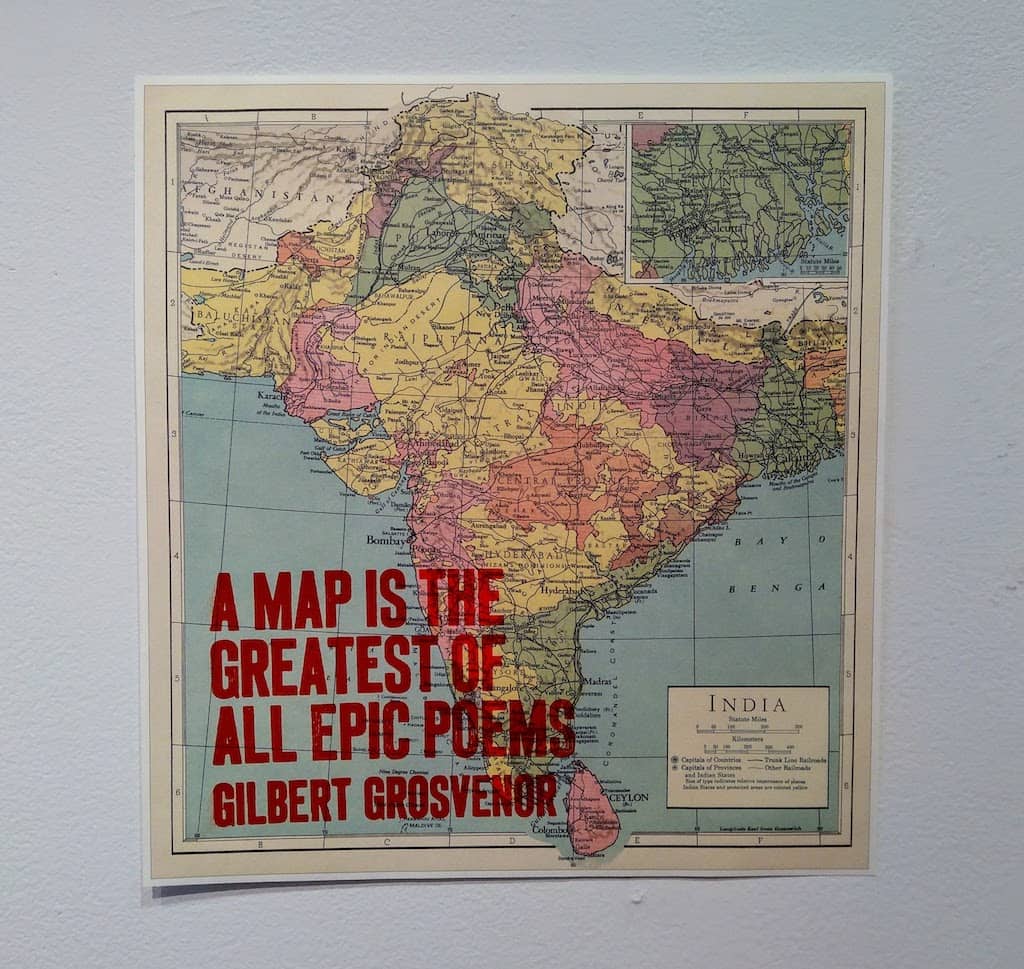
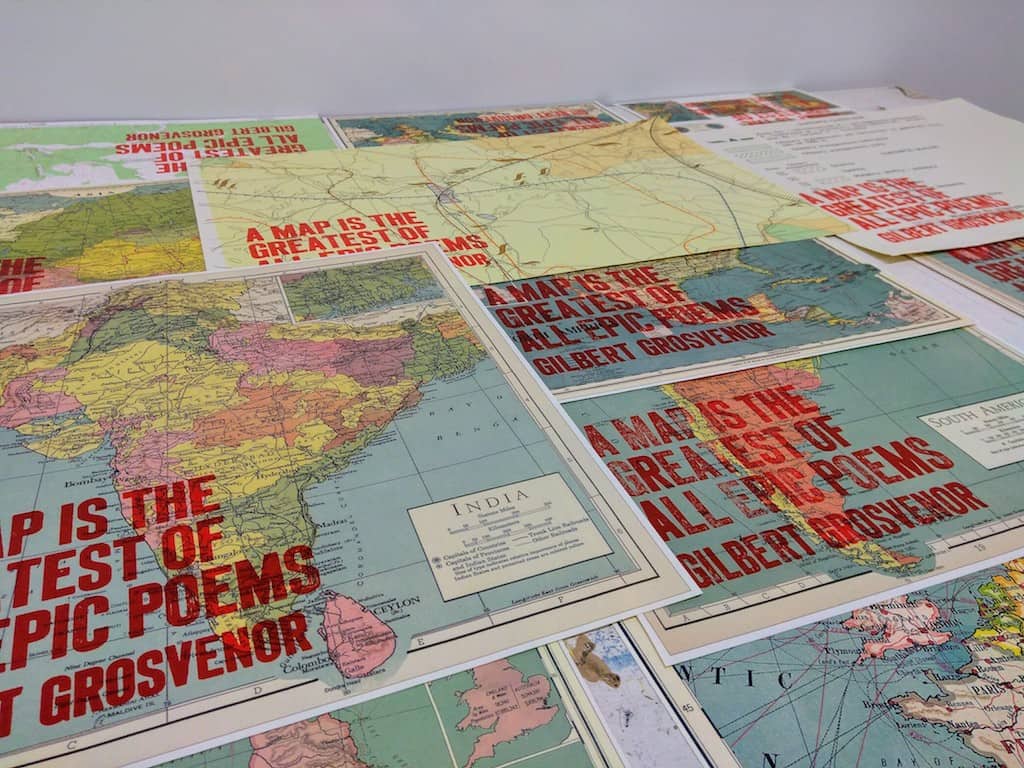
I printed the quote of the map plates in Akzidenz Grotesk, 60 point for the body and 48 point for the credit. The type is well-worn, and so required a lot of packing to print legibly, more-so because the paper was textured (you can see the effect of the texture on the South America map in the photo above).
You wouldn’t think that one-way streets would be a spanner in the works of shopping for locally-produced food, but in my case overcoming a one-way street made a huge difference.
Here was the problem: after spending Saturday mornings at the Charlottetown Farmer’s Market, Oliver and I would often drive over to Riverview Country Market to pick up some things we weren’t able to get earlier.
Riverview doesn’t carry Purity Dairy milk, and so we’d hold off on buying milk with hopes that we might pick it up elsewhere. Sometimes we set out to make that elsewhere the Purity Dairy plant on Kent Street, which is open Saturday mornings.
The problem we perpetually ran into is that Kent Street is one way, and so I’d head down Fitzroy Street with plans to loop around and back down Kent, but I’d forever be undershooting or overshooting and, in the end, the process proved too dizzying to build into our Saturday morning routine.
A few weeks ago, though, I made an adjustment: after the Market we’d head home for a moment, and then set out to traverse what I’ve come to think of as our “local food trail,” heading the right way down Kent Street and thus removing the dizziness.
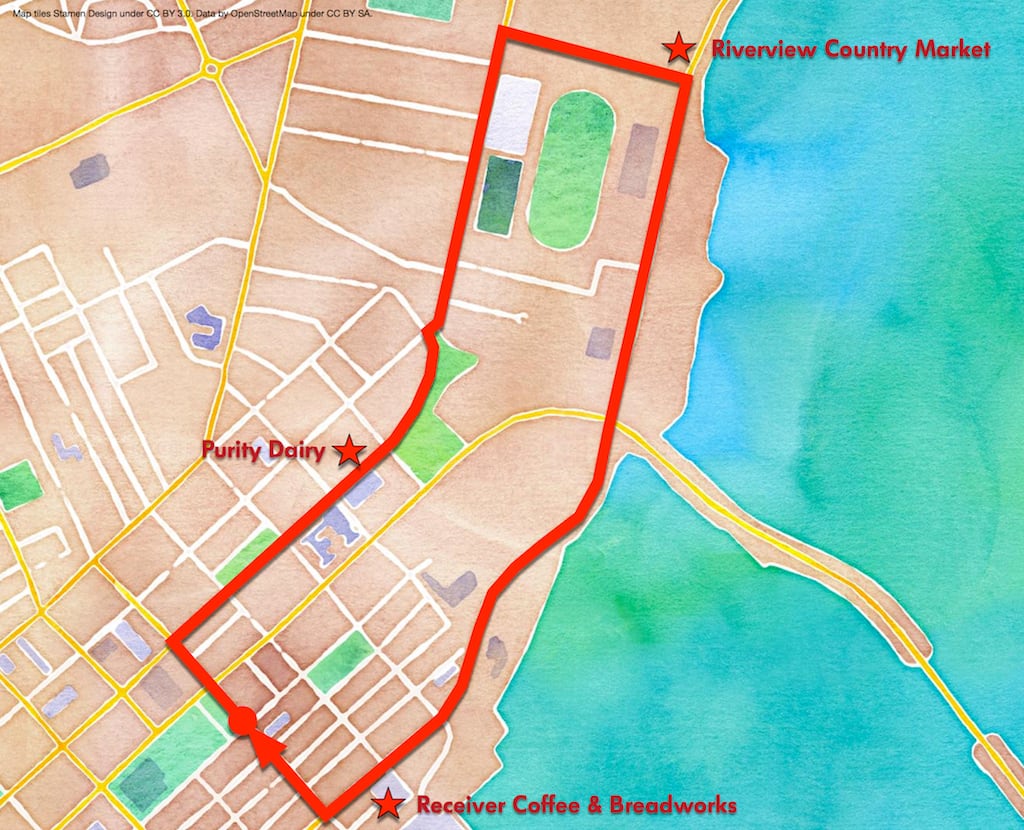
Stop № 1: Purity Dairy
I first met Tom Cullen, owner of Purity Dairy, many years ago at a dinner party hosted by mutual friends, and we’ve been faithful customers of his ever since.
Purity is located on Kent Street just opposite Holland College, and they have a small retail shop in their front office that sells milk, cream, sour cream, and, in an oddly helpful service to customers, ADL butter (ADL otherwise being Purity’s primary on-Island competitor). They’re open weekdays from 8:30 a.m. to 4:30 p.m. and on Saturdays from 8:30 a.m. to 1:00 p.m.
Purity has a parking space out front set aside for customers to pop-in, and we’ve taken advantage of this, and the retail simplicity of the setup, to allow Oliver to do the milk run for the past couple of weeks: I give him a chit that says “2 litres of 3%” and he runs in to pick it up while I wait in the car.
This past Saturday, as it happens, Tom Cullen himself happened along while I was waiting, and so I was able to have a chat with him and grab a photo.
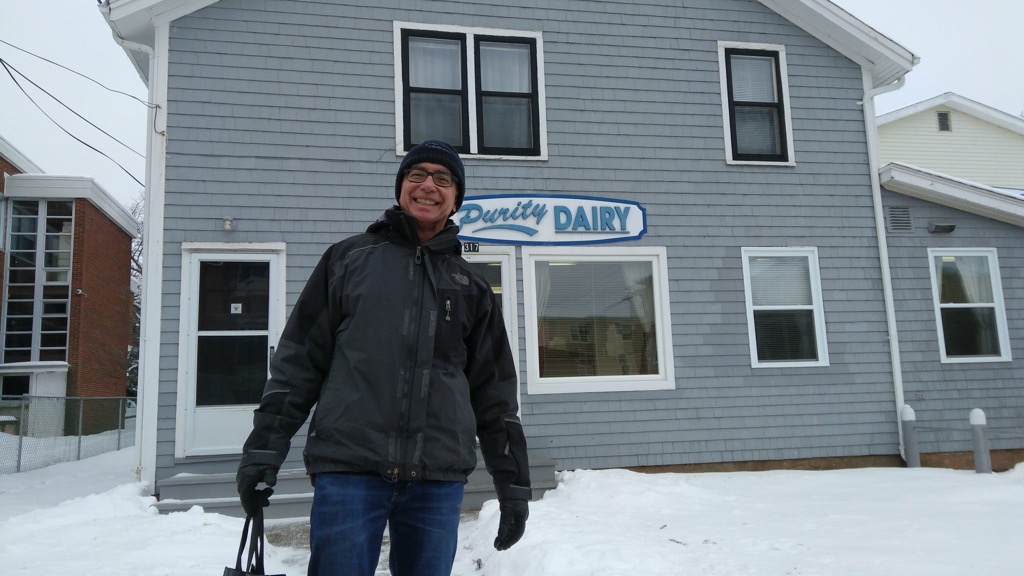
Stop № 2: Riverview Country Market
From Purity Dairy, it’s an easy drive along Kent Street to Kensington Road, and then down Exhibition Drive to Riverview Country Market.
We’ve been customers of Riverview Country Market for many years; Riverview has found a sweet spot in the marketplace, offering locally-grown produce along with a variety of imported goods. This Saturday we bought lettuce, broccoli, cauliflower, peppers, apples, and frozen blackberries.
As a special bonus, this Saturday was also The Handpie Company Pop-up at Riverview, so we got to chat with Handpie Sarah and to pick up some of her pies for Sunday supper.
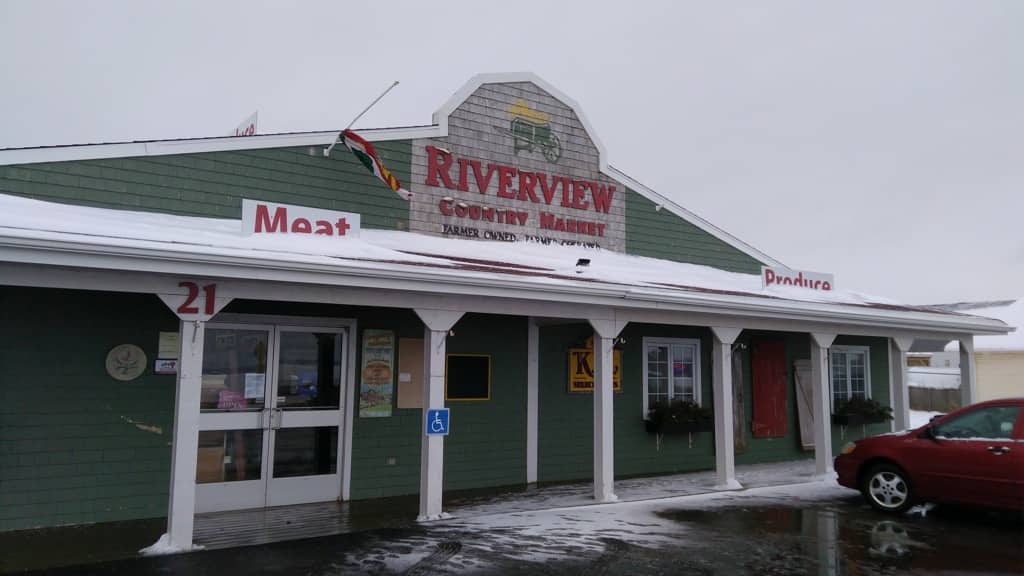
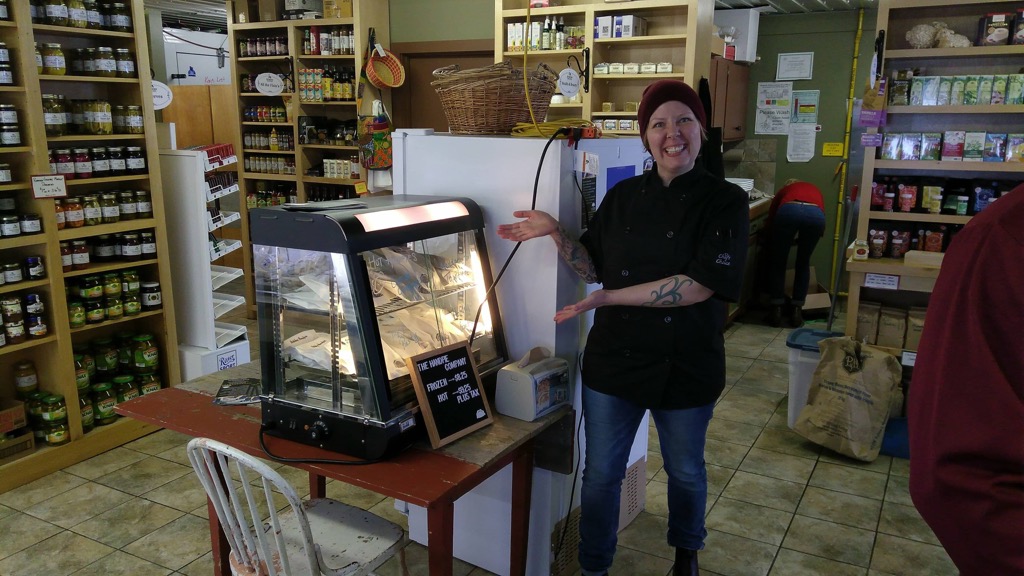
Eagle-eyed readers will notice that Sarah brought Pie Man in with her for the pop-up: you can see him in the bottom-right corner of her sign.
It’s also worth mentioning that Riverview acquired a coffee machine last year, and is making some of the best espresso-based drinks in town these days.
Stop № 3: Receiver Coffee & Breadworks
Leaving Riverview Country Market on Riverside Drive, we head back downtown via Water Street to make our last stop, at The Brass Shop.
We’ve also been longtime customers of both Receiver Coffee and Breadworks, and now that they’re under the same roof, roasting coffee and baking bread out of the Brass Shop, it’s doubly convenient. And their presence on the Trail means that we now make a weekly stop for coffee and bread whereas previously we’d been more hit and miss.
The real draw at Breadworks of late has been that baker John Dale has been making olive bread on Saturdays, and has been fine-tuning his recipe every week, getting ever closer to perfection.
By fortunate happenstance, John was in the shop on Saturday when I stopped by for this week’s iteration, so I was able to get a photo of him as well:
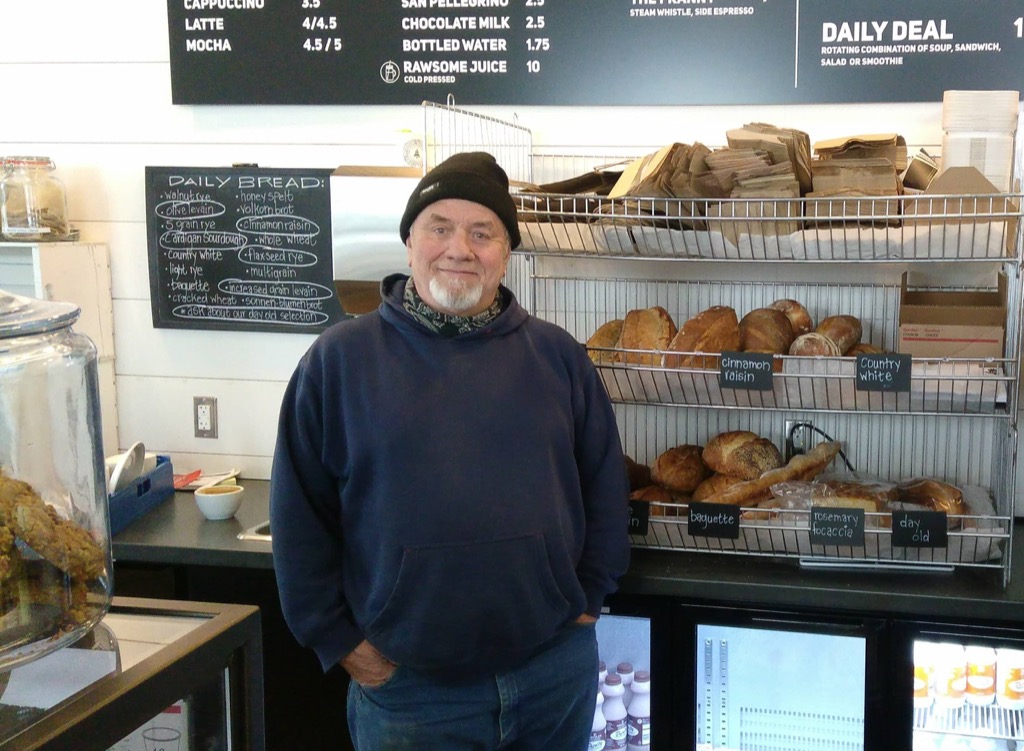
In addition to the olive bread, I also picked up a pound of Receiver’s coffee, as we were running low at home.
The Evolving Trail
This route from Purity to Riverview to the Brass Shop is new for us this month, and so we might mix it up a little in the weeks to come. A stop at Kent Street Market is not outside of the realm of possibility, as they fill in some of the local food gaps in our weekly shop that Riverview doesn’t carry. And I’ve been wanting to become a more regular customer of the Royal Pita Bakery out toward Winsloe; it doesn’t seem like a natural candidate until you factor in that the PEI Humane Society Dog Park is out that way too, and when they re-open after construction we might be able to serve Ethan’s needs as well as our own.
Local food advocates have a long list of reasons why shopping for local food is a good idea, and I subscribe to most of them. The visceral motivation for doing so, however, is that I enjoy buying food produced by people I know, people I can chat with, people who I keep in mind when I’m enjoying their wares, and people who, I hope, have me and my family in mind as their plying their trade.
 I am
I am